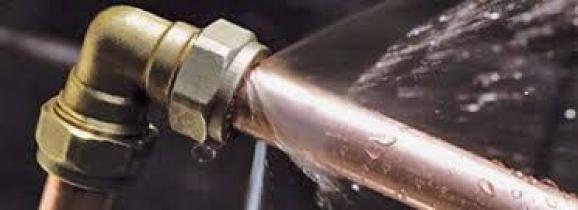Expose the Most Frequent Roots of Leakage Inside Your Home
Expose the Most Frequent Roots of Leakage Inside Your Home
Blog Article
We've uncovered this article relating to Common Water Leaks In House down the page on the web and reckoned it made sense to discuss it with you here.

Leaks not just create waste of water however can also create unnecessary damage to your house and advertise undesirable organic development. By looking and recognizing for everyday scenarios that trigger leakages, you can secure your house from future leakages as well as unnecessary damages.
Immediate temperature changes.
Severe temperature adjustments in our pipelines can cause them to increase and get suddenly. This expansion and also contraction might trigger fractures in the pipes, particularly if the temperature are below freezing. If you maintained an eye on exactly how your plumbing functions, it would be best. The visibility of the previously mentioned situations regularly indicates a high risk.
Corroded water systems
This may be the reason of staining or warping on your water pipes. If our plumbing system is old, think about replacing the pipelines since they are at a higher danger of rust than the more recent versions.
Malfunctioning Pipeline Joints
The factor at which your pipes link is often the weakest web link in the waterline. Pipeline joints can degrade with time, causing water leakages. The majority of pipe joints are not quickly noticeable. If you have loud pipelines that make ticking or banging sounds, specifically when the hot water is turned on, your pipe joints are probably under a great deal of stress. It is suggested to have your plumber evaluate your system annually.
Intruding roots
A lot of water leaks begin outside the home rather than inside it. You may discover damp patches or sinkholes in your backyard, and that could indicate that tree roots are attacking water lines triggering water to permeate out.
Poor Water Connectors
Sometimes, a leakage can be caused by loosened tubes and pipelines that supply your devices. More often than not, changing is what causes the loosened water Connections. You could discover in the case of a washing machine, a pipe may spring a leak as a result of shaking throughout the spin cycle. In case of a water connections leak, you might observe water running directly from the supply line or pools around your home appliances.
Clogged Drains
Blocked drains pipes might be aggravating and inconveniencing, however they can occasionally end up triggering an overflow bring about burst pipelines. Maintain getting rid of any products that might go down your drains that could obstruct them to stay clear of such aggravations.
All the above are causes of leakages yet not all water leakages arise from plumbing leaks; some leaks may originate from roofing system leakages. All leakages ought to be repaired instantly to stay clear of water damages.
Leaks not only trigger waste of water yet can also cause unnecessary damage to your house and also promote unwanted natural development. By recognizing and also looking for everyday situations that cause leaks, you can protect your residence from future leaks and unnecessary damage. Today, we will look at 6 leakage creates that may be causing your pipes to drip.
At times, a leak can be caused by loose hoses and pipes that supply your appliances. In case of a water connections leak, you may notice water running straight from the supply line or puddles around your appliances.
How To Check For Water Leak In Your Home
How To Check for Leaks
The average household's leaks can account for nearly 10,000 gallons of water wasted every year and ten percent of homes have leaks that waste 90 gallons or more per day. Common types of leaks found in the home are worn toilet flappers, dripping faucets, and other leaking valves. These types of leaks are often easy to fix, requiring only a few tools and hardware that can pay for themselves in water savings. Fixing easily corrected household water leaks can save homeowners about 10 percent on their water bills.
To check for leaks in your home, you first need to determine whether you're wasting water and then identify the source of the leak. Here are some tips for finding leaks:
Take a look at your water usage during a colder month, such as January or February. If a family of four exceeds 12,000 gallons per month, there are serious leaks.
Check your water meter before and after a two-hour period when no water is being used. If the meter changes at all, you probably have a leak.
Identify toilet leaks by placing a drop of food coloring in the toilet tank. If any color shows up in the bowl after 10 minutes, you have a leak. (Be sure to flush immediately after the experiment to avoid staining the tank.)
Examine faucet gaskets and pipe fittings for any water on the outside of the pipe to check for surface leaks.
Undetected water leaks can happen without the home or business owner even realizing. If you suspect a water leak, but not able to find the source. It is time to contact a professional water leak detection service, The Leak Doctor.
How To Find a Water Leak In Your Home
https://www.leakdoctor.com/blog/How-To-Check-For-Water-Leak-In-Your-Home_AE197.html

I came across that article about How Fast Water Damage Can Ruin Your Home while doing a search on the web. Do you know about someone else who is intrigued by the subject? Take a moment to promote it. Thank you so much for going through it.
Address emergency plumbing promptly here. Report this page